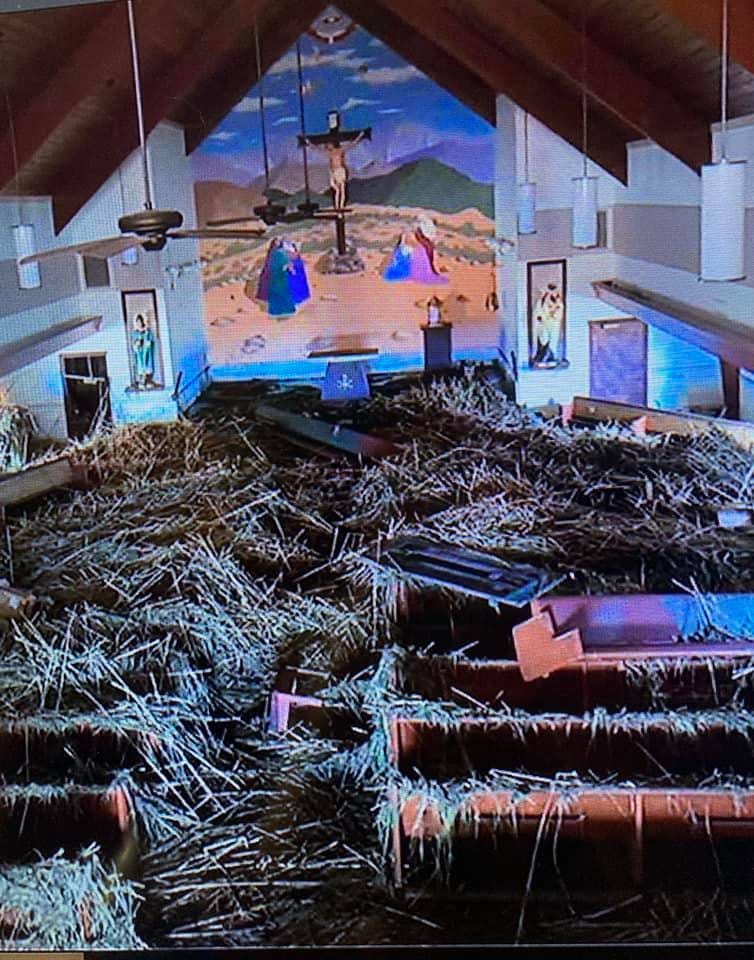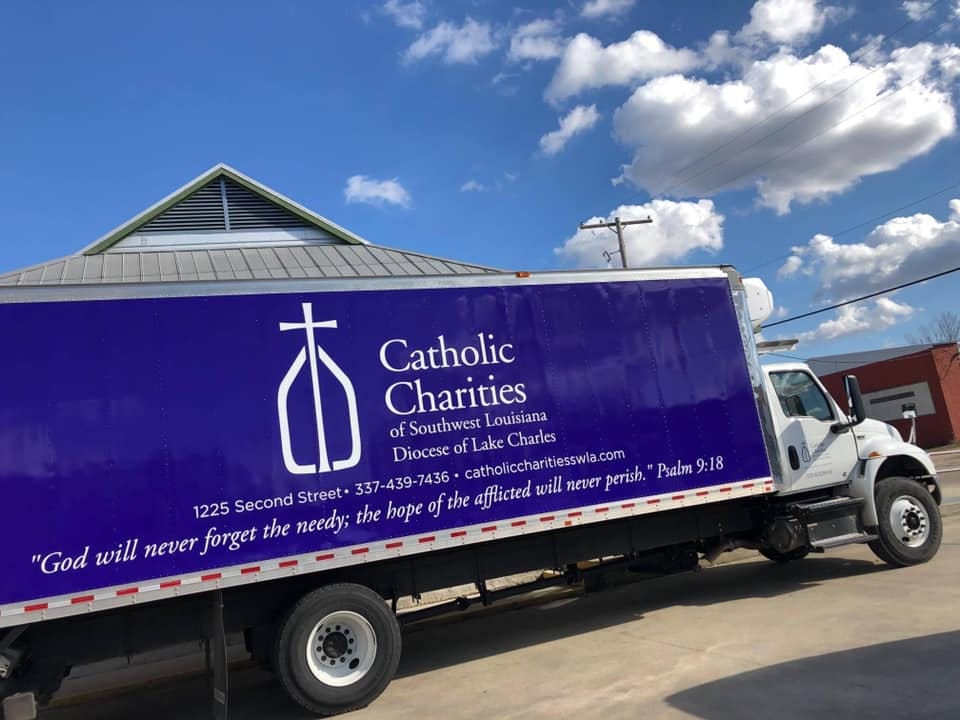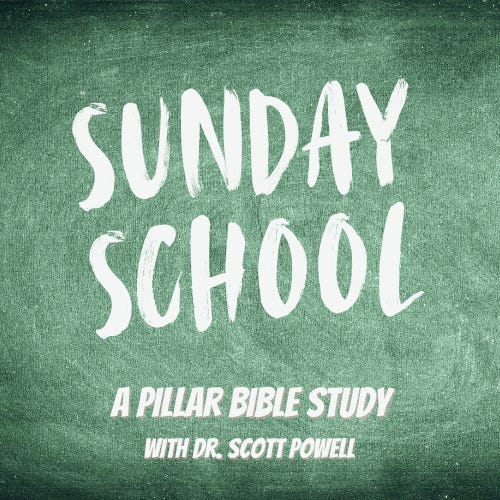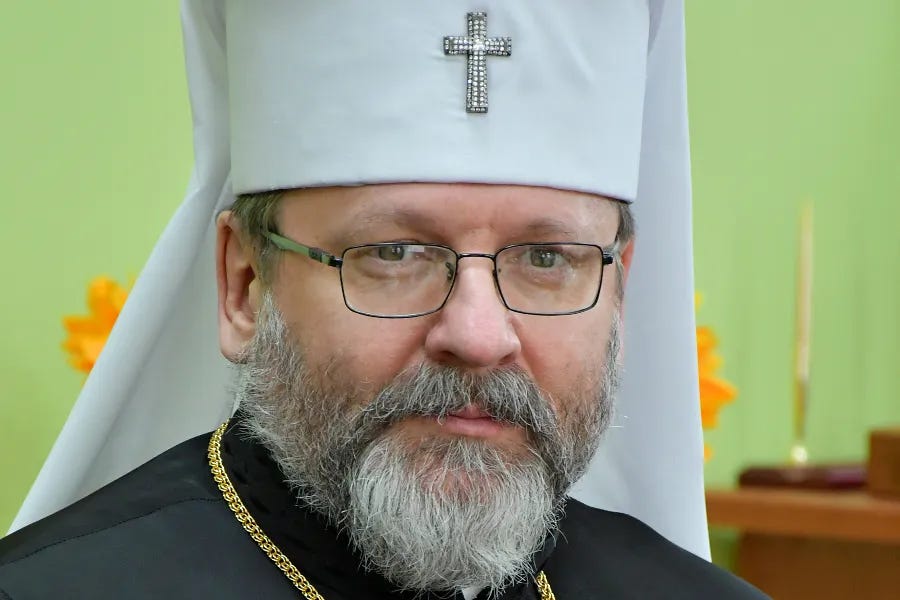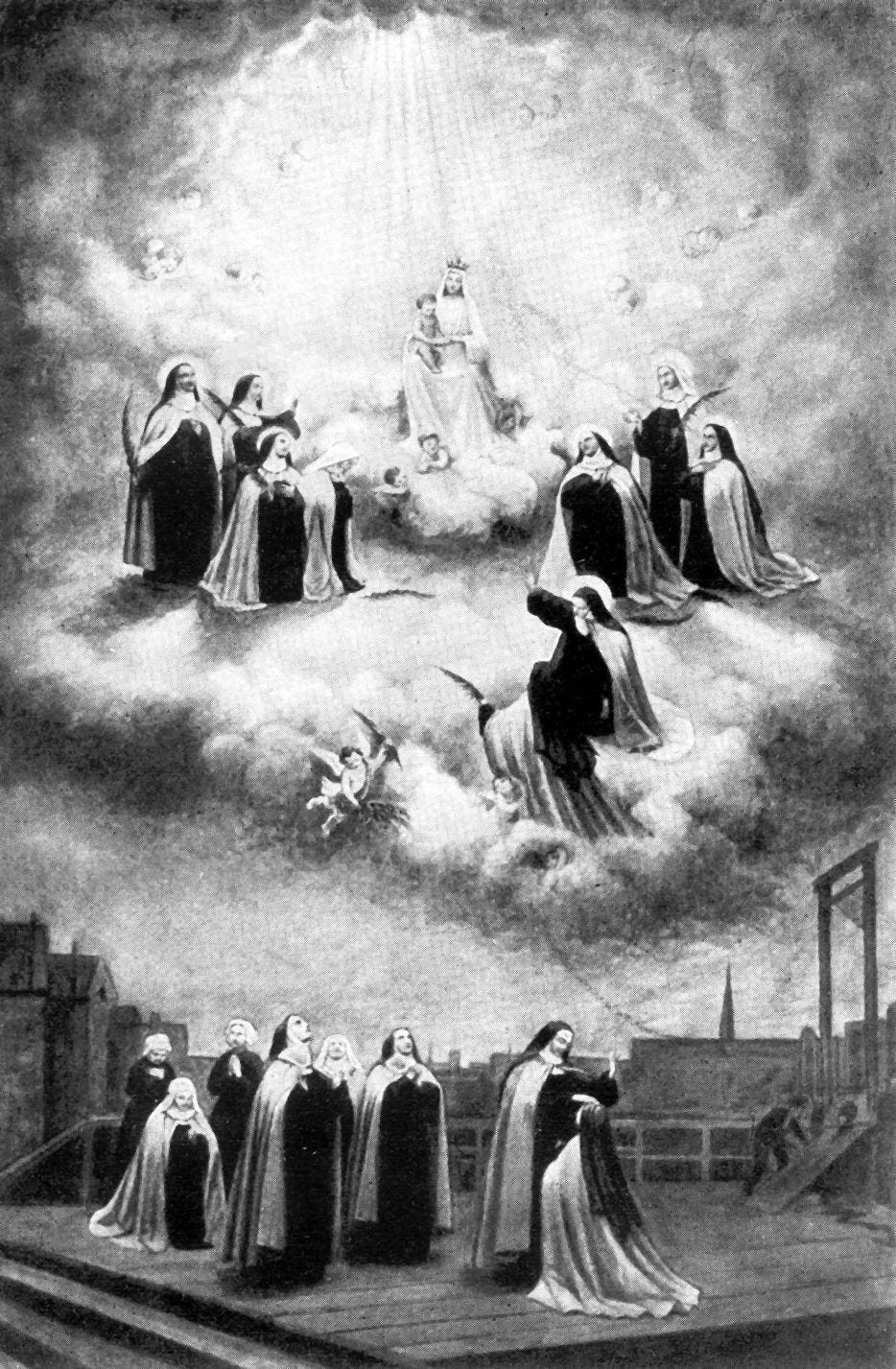
The Diocese of Lake Charles had a pretty tough 2020 — even by the standards of 2020.
In August 2020, the strongest winds of Hurricane Laura made landfall in Cameron, Louisiana — a coastal community in the Lake Charles diocese. Laura was one of the strongest hurricanes ever to hit the United States; its winds, rains, and storm surges did billions in damage across southwestern Louisiana and eastern Texas.
Just months later, Hurricane Delta made landfall in almost the exact same place that Laura had. It struck recovering communities in early October, just as they were starting to dig out from the destruction they’d already suffered.
The hurricanes were followed by a February 2021 ice storm, and then, in May 2021, devastating floods. Through it all, Lake Charles’ Bishop Glen Provost has called his parishes to a plan of recovery, and a focus on the Church’s mission.
In a two-part interview, Bishop Provost talked with The Pillar about rebuilding, recovery, and the mission of the Church.
This is the first part of a two-part interview. It has been edited for length and clarity
Bishop, you’ve been leading a recovery process for more than a year in your diocese. What have been the spiritual needs of your people over this past year? What is your approach, as their bishop, to pastoral care during this suffering?
I am a Louisiana native and I've seen many storms in my 72 years.
My experience tells me that people yearn for a return to normalcy. Therefore, it has always been my approach as a pastor and now as a bishop to continue providing for their spiritual needs.
Yes, there may be circumstances that require caution, But here in the Lake Charles diocese, Hurricane Laura destroyed seven churches in the diocese, and that does not prevent the priests from being present and visible.
The weekend following Hurricane Laura, I celebrated Mass in a large tent for the victims from eastern Cameron, which is the civil parish along the coast, where five churches had been destroyed along with their rectories, their parish halls, their catechetical buildings.
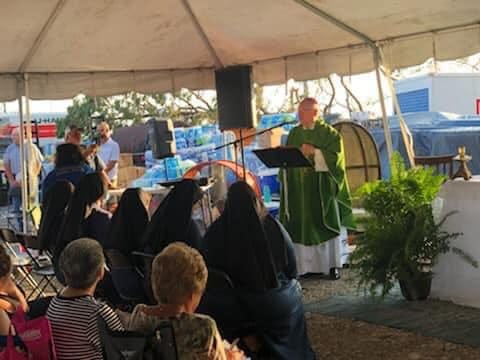
Following that Mass, our Catholic Charities distributed what the people needed most and what they had requested most frequently. And those were chainsaws and small generators, along with water. It's kind of a curious thing there, but this is what they wanted.
Chainsaws to get through the debris on their property and around their houses, and small generators because in many cases they still did not have electricity — electrical service — so they needed generators to keep their freezers and air conditioners working.
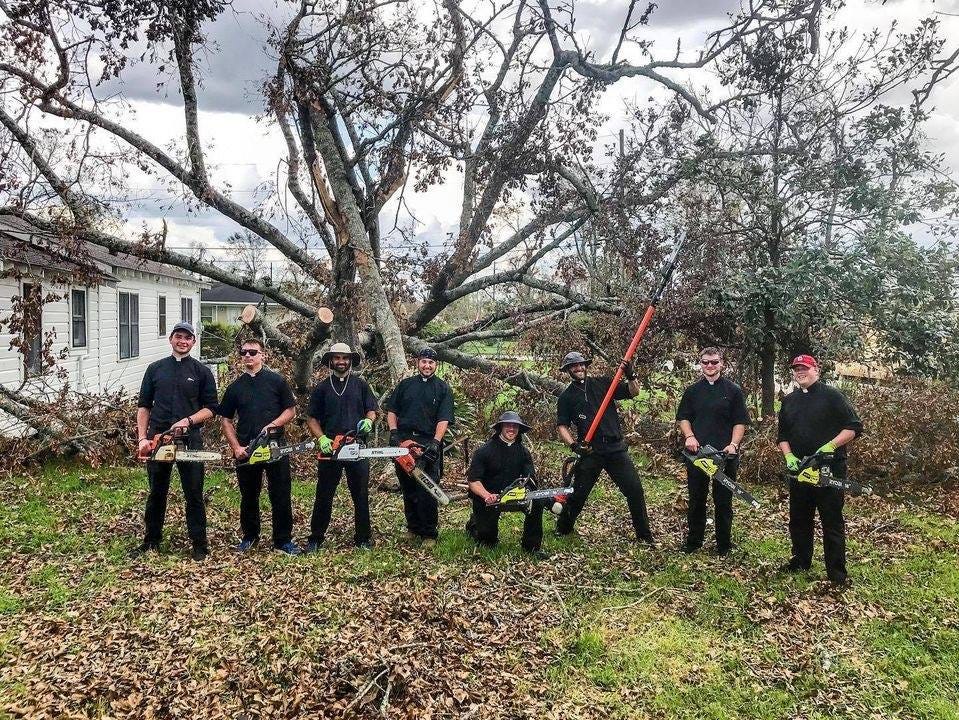
What has been it like to be in solidarity with your people in the wake of the hurricanes?
After the hurricane, I announced to the priests and the faithful that recovery would remain our all consuming goal for the foreseeable future. Recovery is the goal. We can't deviate from that goal. We want to recover as much as we can and reestablish our ministries.
I made clear to them that everything is to be subordinated to the recovery. Beginning with the recovery of our pastoral services, which includes our Catholic schools and our catechetical programs. That’s most important.
I think we must digest an important fact: Recovery will take years. Patience is of the utmost.
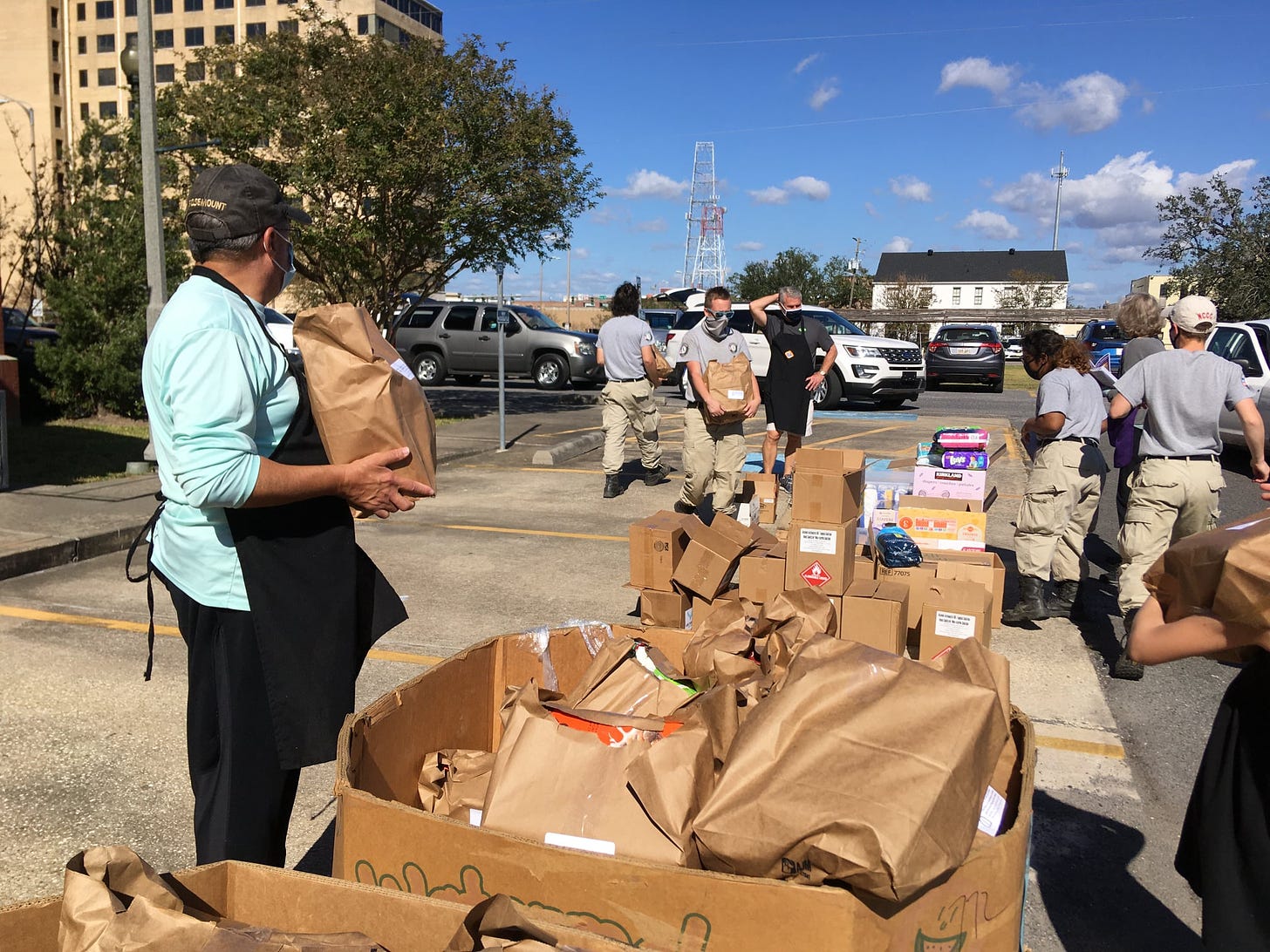
How have your priests fared in the work of recovery?
Our priest remained in their parishes to help as I remained in the diocese — we remained here. The priests did marvelously well; I thought it was a heroic effort: helping, assisting, coordinating, distributing needed items.
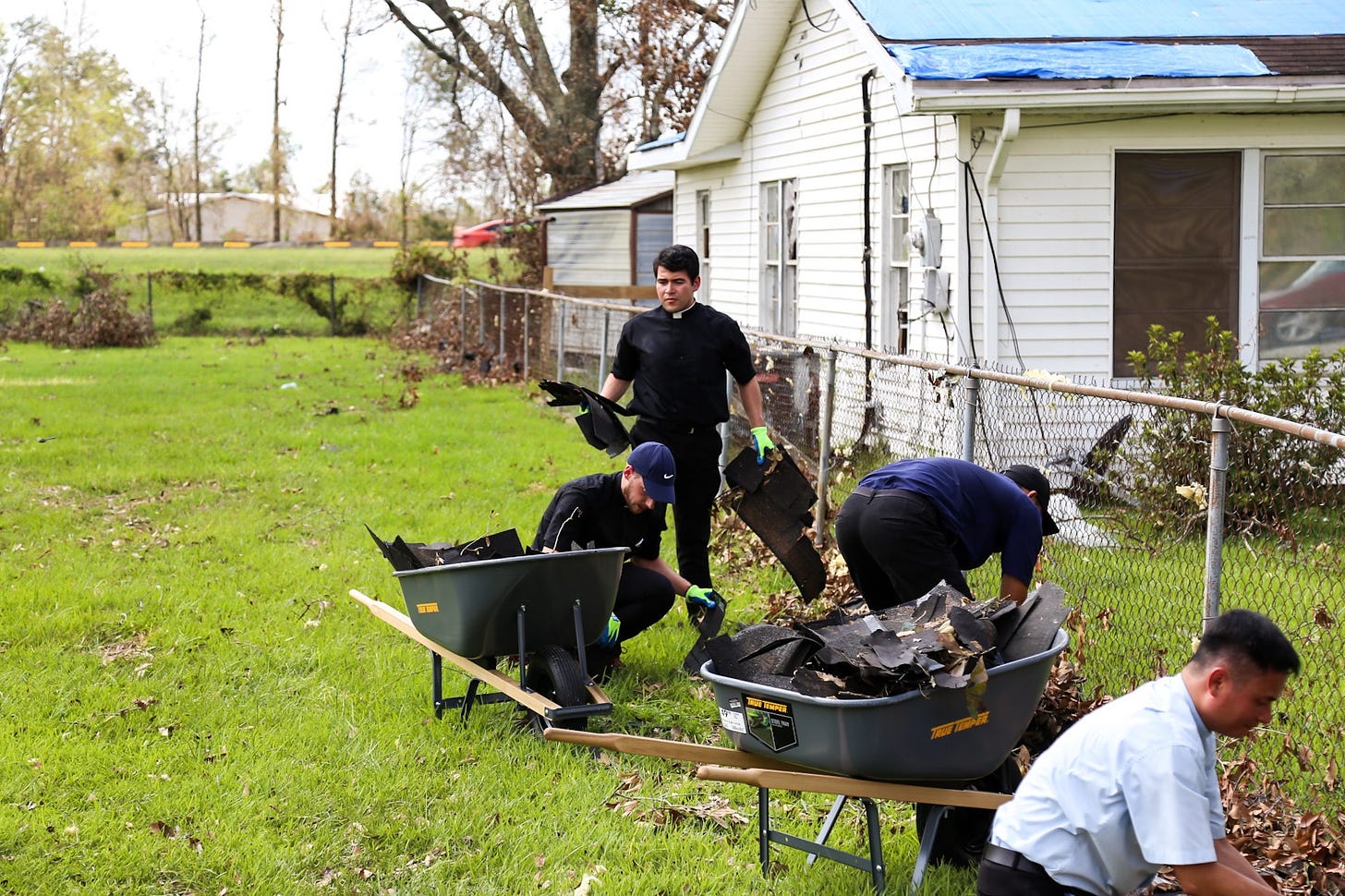
My office and I kept in touch with the priests. And I personally visited all the parishes, especially those that have been affected, which were most of them. I did those visits over a period of four weeks, it was fortunately done before [Hurricane] Delta struck.
Within a week after Hurricane Laura, I had set up a recovery team led by one of my vicar generals, which began the first week of September. In that same time period where we were already in touch with insurance and taking applications for a consultancy group to guide us through the intricacies of the recovery and funding.
The presbyteral council played a very important role, especially the deans — I have to commend the deans. I have a very good group of efficient deans, very conscientious, who all very competent and dedicated pastors. I'm very proud of their work. They helped a great deal.
I have made it clear to the priests that any one of them can call or visit with me whenever he wishes and they have done so. We keep in active conversation with them.
What does rebuilding the churches of your diocese look like? The task must be momentous.
Well, following Hurricane Rita in 2005 and Hurricane Ike in 2008 — these were devastating storms — it took us six years to rebuild the five parishes on the coast that had been destroyed after Rita.
Now, those storms did not affect us to the extent that Hurricane Laura affected our parishes, but they were destructive and it took us six years to rebuild the five parishes on the coast that had been destroyed after Rita. And so it took six years for us to feel comfortable that we had put things back in order and we were moving along.
The chancery had been seriously damaged after Rita, but it had been rebuilt.
There was no moment at which you could wipe your hands and say “We’ve accomplished it, we’ve finished with recovery.” Because frankly there was still some vestige of damage from Rita and Ike even after we had declared the parishes rebuilt.
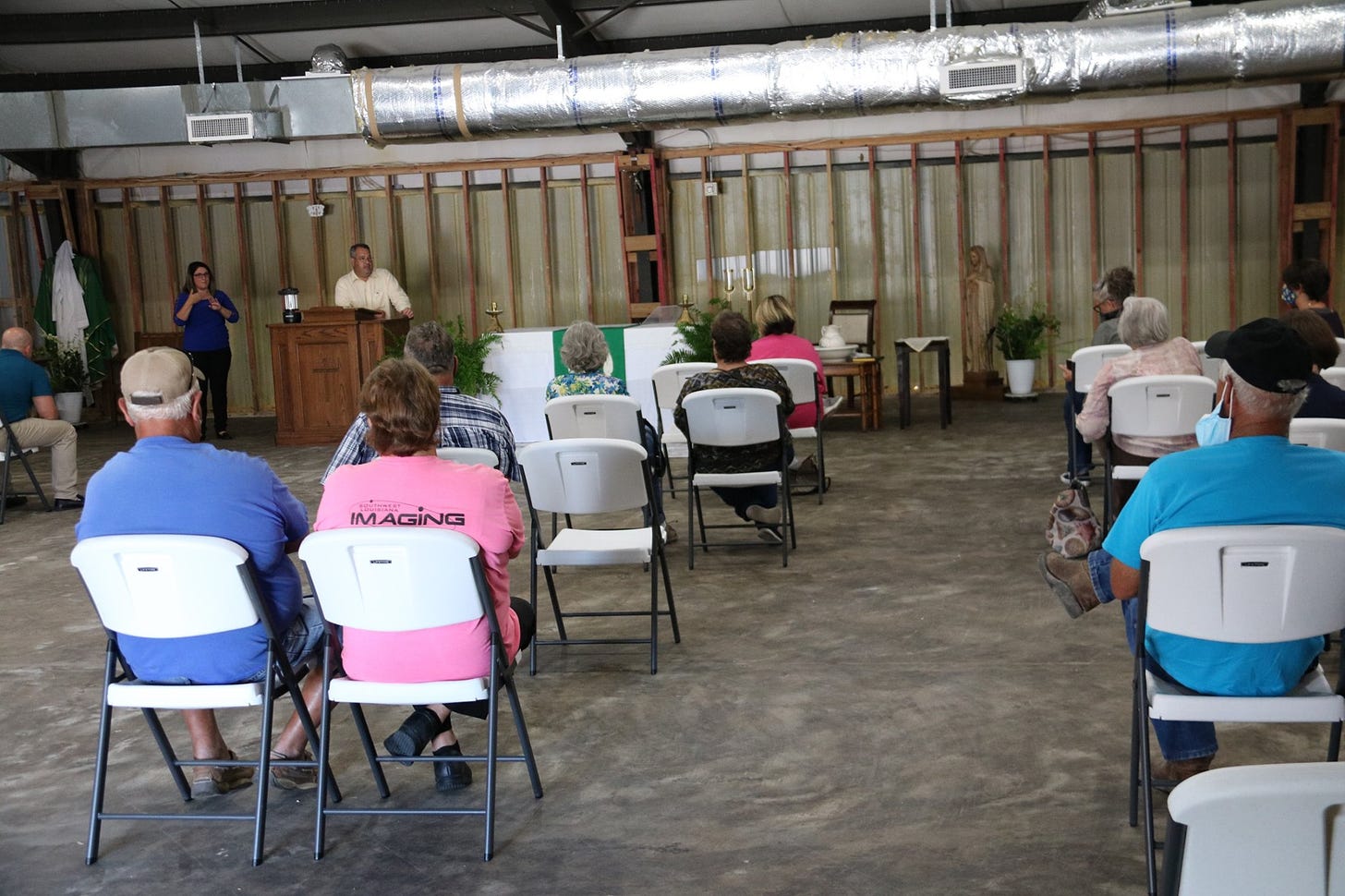
You know, when you have a collection of buildings, you can easily address that. It’s contained. But when you have far-reaching destruction, which blankets an entire area, well, then this is a crisis and it affects people in every economic group, and the young, the old, everybody!
And then after Laura and Delta — and I know this is going to sound funny to somebody who knows Louisiana, but we also had an ice storm in February or so of this year. That caused a lot of damage, especially to vulnerable buildings which had been damaged by Laura and Delta.
So the ice storm came, and then in May, we had severe flooding.
We now have over 500 locations severely damaged or destroyed after Hurricane Laura. Three schools are in temporary buildings and five priests are still in temporary housing.
Five-hundred locations?
Five-hundred locations. I'm talking about buildings of every sort — from a shed used by the Knights of Columbus or a parish for barbecues, to a rectory, to a CCD building.
In your diocese, that sounds like it must be pretty much everything. Five-hundred locations is pretty much everything. That's just comprehensive damage.
Yes, that is correct. That is correct. Yes, it's a stunning amount of buildings. As I said, they range, they range from a pavilion used for church barbecues to a rectory, to a CCD building, to buildings at the school. There's a range in there. We have three schools that are in temporary buildings right now.
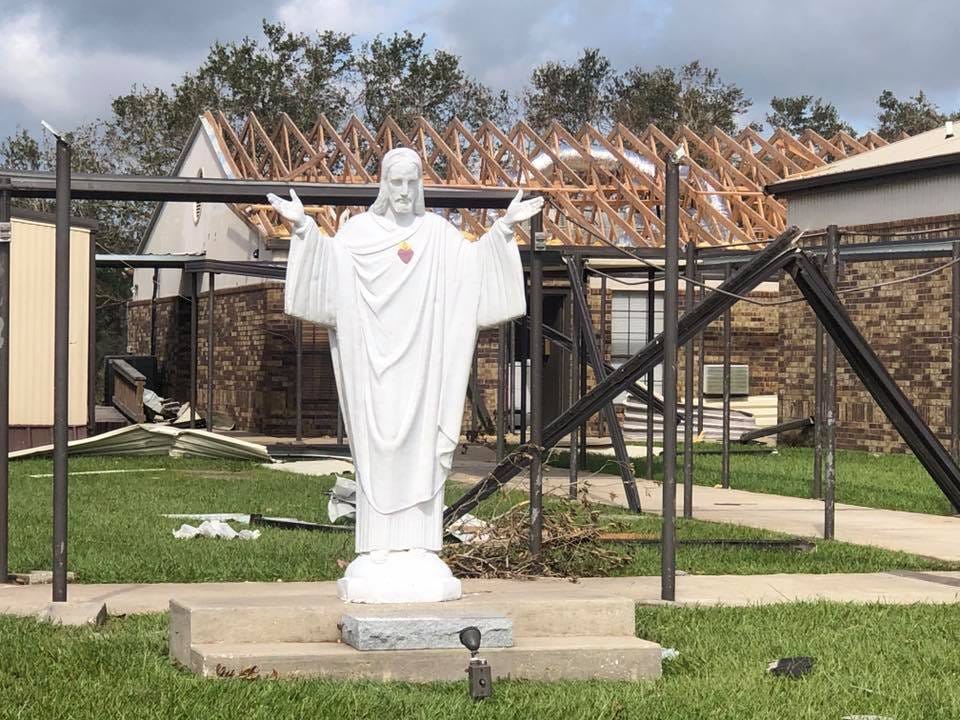
What have the hurricanes done to parish revenues in your diocese? How will they impact the long-term viability of parishes?
There has been a shift in collections. I call it a shift. I didn't know quite what to call it, but It's been a shift. And we keep that shift monitored.
For smaller parishes and smaller communities, the loss of income is significant. In the months and years to come we will have to keep it monitored so that we know what exactly the signifies and how it's going to impact the smaller parishes here.
Some other parishes, both rural and urban have actually seen an increase in revenue. This I think is remarkable under the circumstances, but you do have some parishes that are registering an increase in revenue.
What this tells me is that the demographics are changing. People in low-lying areas are moving to higher ground. Four major hurricanes in 15 years is enough for people in low lying areas. And so there was a shift — they’re moving north, you see, north of I-10.
We have whole neighborhoods — one in particular that I’m thinking of that has suffered a lot in the last 14 years with flooding, and something needs to be done — they’re going to need help moving, they’ll have to move. The whole neighborhood is just not sustainable.

You’re planning for a long recovery, but in other parts of the country, people don’t realize how long that process can be. The news moves on to something else, while you’re still cleaning up.
Yes, yes. The news cycle shifts and goes on.
I mean, I live in a neighborhood that suffered a lot of damage. Thanks be to God, my house was not destroyed. It was damaged; I had leaks everywhere, and the roof had to be changed, and I lost 16 trees in my yard, so that I couldn’t even get to my house.
But my next door neighbor’s house was destroyed. I mean, destroyed! Three trees fell on it, and then with the water and the wind, it was just destroyed.
That happened last August, and the house was just removed two weeks ago. You see what I’m saying? Now there are all kinds of reasons for that, but you just do what you can and you have to be very patient.
But as you said, people forget and the news cycle moves on to something else. But we are concerned about our friends and neighbors who were affected by Ida and we want to help them. And we’re trying to do the best can. We’re limited, but we try to do the best that we can.
I do have to say our Catholic Charities has been very, very fine. They’ve done very fine work. The Catholic Charities building was destroyed in Hurricane Rita. So there again, within that roughly six-year period, we rebuilt Catholic Charities.
And I think it was a great success because we added warehouses, you see, to the Catholic Charities operation. So we could save food and things that are perishable in coolers in the warehouses.
So when Hurricane Harvey struck Texas and devastated parts of Texas [in 2017], we were able to send assistance to Beaumont, because we have the warehouses. So, this was a plus, I consider it to be a great success that after Rita, we were able to rebuild Catholic Charities to be much more efficient and much more comprehensive.
What advice would you offer to bishops in eastern Louisiana who are now dealing with hurricane recovery after the devastation of Hurricane Ida last month?
I say to my brother bishops or whomever works with them, to be patient and plan ahead, while fully realizing that those plans will need to be adjusted. No plan should be set in stone, it has to be flexible.
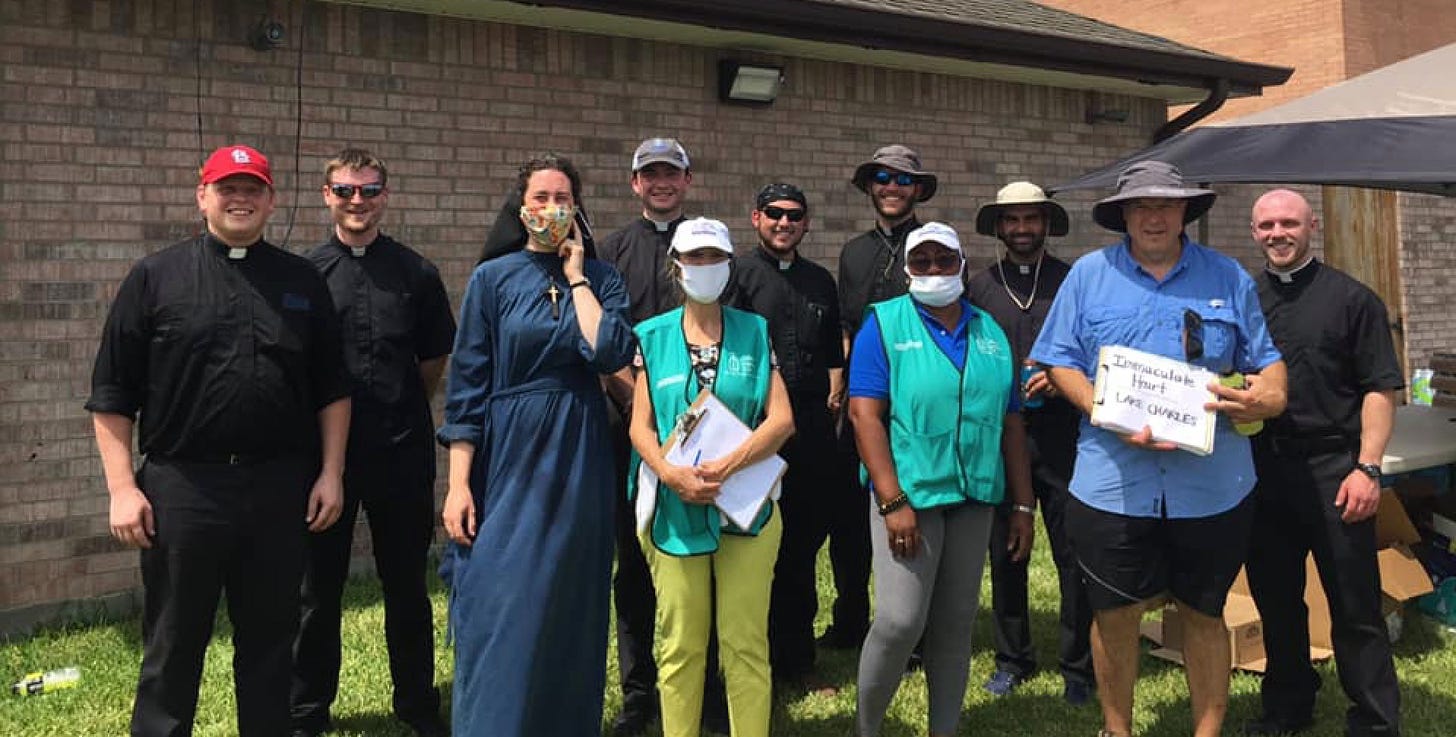
So you have to have a plan for recovery, but it has be flexible to allow for contingencies. And you have to reach out, to be with the faithful, to identify with them, understand their needs, keep the focus away from peripheral and non-essential issues, and return to the basics.
I was just sitting with my presbyteral council this week about that very thing. That a lot of peripheral things have to take a back seat to focus on our priorities.
I am talking about pastoral care. We have to be available to the people and their needs. I mean, people are raising their children, their children have to be baptized, there's instruction to be given.
We can't stop the life of the Church just because we're having these storms, or this pandemic for that matter. The churches have to remain open. If they're destroyed, well, then we make provisions for something else.
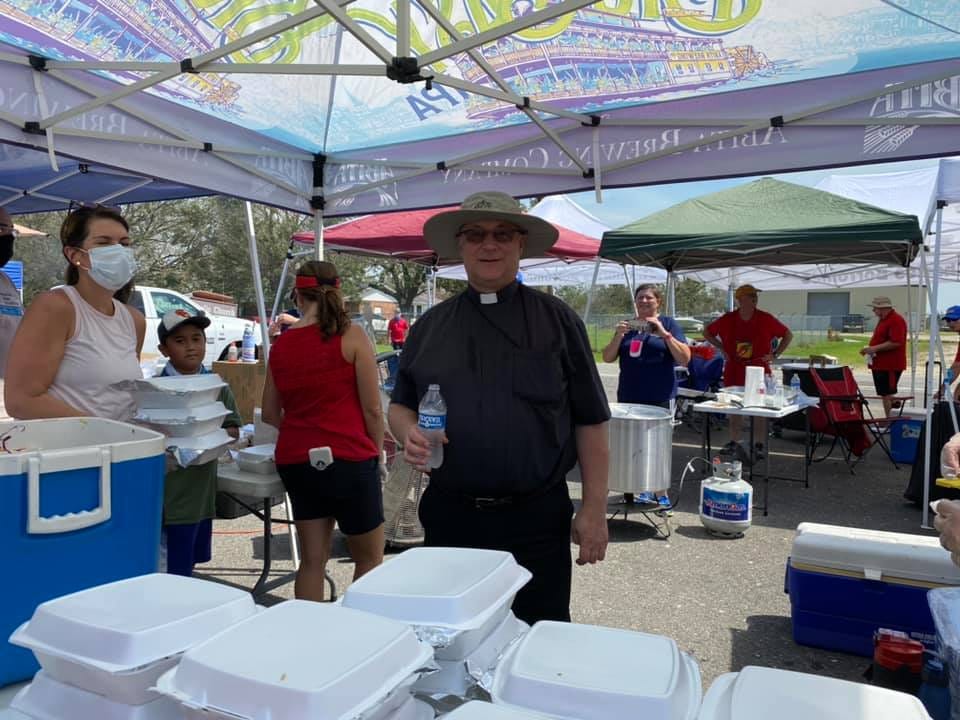
We have a parish just down the road from me, maybe about a 15-minute drive. It was seriously damaged, it’s considered to be a loss. The pastor arranged to get a temporary building for Masses and this was done within a few months.
He had the people back into a what you could call a church before Christmas. So this is good. This is good. It’s imaginative thinking, it’s taking initiative.
And I have found our priests have done just that, and I commend them for it.
In part two of this interview, Bishop Provost reflects on lessons for the Church and her mission from the experience of the hurricanes. Look for it later this week.

